Soil borne plant pathogens like Fusarium spp., Macrophomina phaseolina etc. causes severe yield losses in major arid land crops like Cumin, Pearl millet Clusterbean, Mungbean etc. Mono-cropping of these major crops facilitates the build-up of population of these soil borne plant pathogens. Once these pathogens get established in the soil eco-system it becomes very difficult to eradicate because they can survive for several years by producing dormant propagules in the soils.
Complete eradication of these soil borne plant pathogens by chemical means is not feasible and it requires huge amount of energy and chemicals which ultimately pollute the environment and also create imbalance in the eco-system. Use of chemicals for the management of diseases require availability of water in ample quantity for spray or for drenching which is either not available or difficult to bring at the site.
Another thing is that most of the produce of crops like cumin, coriander, fennel, peal millet, moth bean, mungbean etc. and some of the horticultural crop products are directly used for human consumption.
Therefore use of excess pesticides on these crops is also not advisable for consumption by human beings and for protection of environment. Under such circumstances use of eco-friendly approaches is the most appropriate way of managing crop disease in arid region.
To manage specific crop disease, number of ecofriendly approaches can be combined to get best results. Some of these management strategies are discussed here.
Crop rotation:
Planting of non-host crop or crop which is not attacked by the pathogen for 3-4 years is sufficient to reduce the population of the pathogen. Some of the bio trophic pathogen can be completely controlled by crop rotation.
Best sequence of crop rotation in arid land is cereals followed by legumes. Some of the examples of crop rotation sequence for specific disease management are as follows (Table-1,Fig.1)
Table -1
|
S.No. |
Crop sequence |
Disease management |
|
1 |
Pearl millet – Clusterbean |
Downy Mildew of Pearl millet |
|
2 |
Clusterbean-Mothbean-Pearl millet |
Dry root rot of Clusterbean |
|
3 |
Wheat-Mustard-Cumin |
Fusarium wilt of Cumin |
Molya disease of Wheat caused by Heterodera vaenae can be effectively controlled by following crop rotation with crops like Carrot, Fenugreek, Onion, Mustard and gram.
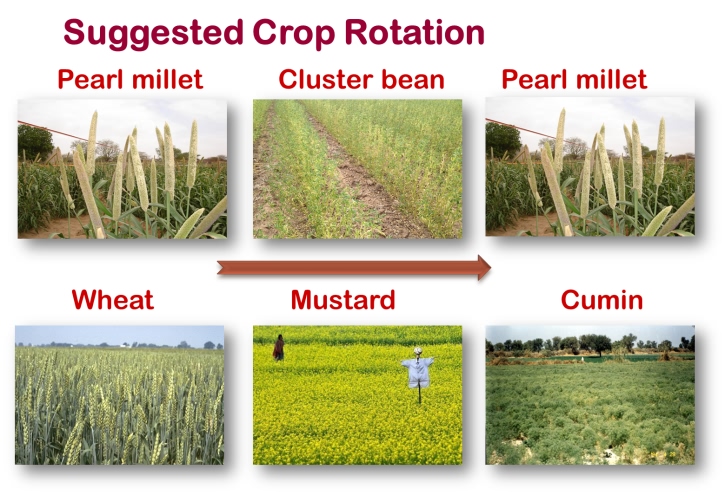
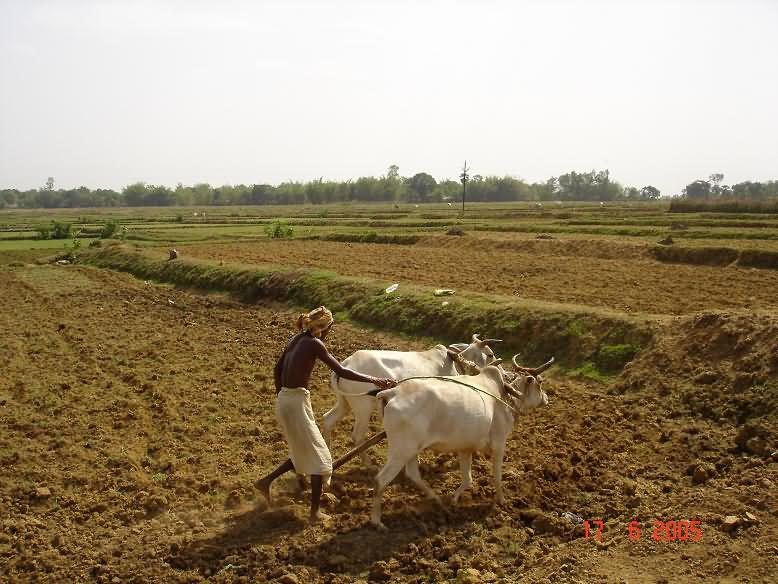 Summer ploughing:
Summer ploughing:
This management strategy is most successful in arid regions because of availability of high temperature (42-48) and crop free land during April-June. Usually such lethal temperature range is available in the top soil layer only.
In order to expose buried inoculum, infested crop debris, dormant mycelium and resting spores of the pathogen like sclerotia, chlamydospores, oospores etc. to lethal heat, soil is subjected to plough down during April-June.
This technique is highly recommended for the control of nematodes. Deep summer ploughing also helpful in decomposition of crop debris, improved water holding capacity and soil aeration, degradation of harmful pesticides residue etc. Summer ploughing is sometime quite helpful for control of noxious weeds by burring their seeds into more depth or exposing them to high soil temperature.
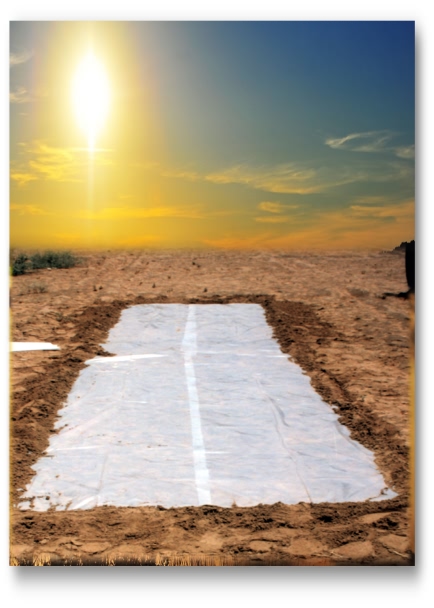
Soil solarization:
Soil solarization is a technique used for disinfestation of soil. It was developed by a team of Israeli scientists. In this technique, a translucent polyethylene sheet (25-50 micron thickness) is used for mulching on moist infested soil during hot sunny days. Depending upon soil type, polyethylene sheet, prevailing ambient temperature an increase between 5-14 0c has been observed.
This technique is especially effective in the areas where climatic conditions favours adequate heating of soil during crop free periods. Therefore this technique is best suitable in arid regions for the management of soil borne plant pathogens, noxious weeds, nematodes etc. Heat conductivity of wet soil is always greater than the dry soil; therefore it is advisable to irrigate the land before plastic mulching to get best results.
In arid regions soil borne plant pathogens like Macrophomina phaseolina ( dry root rot), Fusarium spp. ( wilt), Alternaria spp. (leaf blight), Heterodera avenae (Molya disease) causes heavy losses every years in many economically important crops. By adopting soil solarization at rite time we can able to minimize the losses at greater extent.
Hot water treatment:
This technique is used to eliminate the seed borne inoculum. Hot water treatment is an eco-friendly method where seeds are treated in hot water at specific temperature for a particular time period which is sufficient to inactivate or kill the dormant propagules of the pathogen present in the seed.
Some of examples of most common diseases of arid land crops, which can be controlled through hot water treatment are given bellow-
- Bacterial blight of clusterbean ( Xanthomonas axonopodis pv. cyamopsodis)- Hot water treatment at 56oc for 10 minutes
- Loose smut of wheat ( Ustilago segatum fsp tritici)- soaking of seeds in water for 4 hrs. (8AM-12PM) followed by sun drying under the shade for 4 hrs.(12PM-4PM).
Saline water treatment:
This is especially designed for elimination of sclerotia of Claviceps fusiformis causing ergot of Pearl millet. If admixed seeds are sown in the field, sclerotia germinate and infect the healthy plant by producing ascospores and furthermore these ascospores with the help of wind infect the nearby healthy plants cause yield loss. Usually these sclerotia are light in weight; dipping the admixed seed in 10% brine solution is sufficient to eliminate them from the healthy seeds.
Mixed cropping / Intercropping:
This is the traditional method of cultivating two or more crops simultaneously on same piece of land. The main objective of this technique is get good returns from second crop if main crop fails due to biotic or abiotic stresses.
The best combination of mixed or intercropping which is found advantageous in arid regions is cereals-legume intercropping. In this system, legume crop provide nitrogen, suppress weeds and conserve moisture due its broader leaf canopy.
In mixed cropping system roots of non-host crop act as physical or chemical barrier (root exudates) and suppress the growth and development of soil borne plant pathogens. For example, root exudates of Sorghum contains HCN which reduces the population of Fusarium udum; the Pigeon pea wilt fungus.
Some of examples of most common diseases of arid land crops, which can be controlled through mixed/inter-cropping are given bellow
Table-2
|
S. No. |
Cropping System |
Disease Managed |
|
1 |
Pearl Millet/Sorghum+ Groundnut (1:3) |
Tikka disease of Groundnut (Cerccospora arachidicola) Rust of Groundnut ( Puccinia arachidis) |
|
2 |
Mothbean+Groundnut |
Collor rot of Groundnut ( Aspergillus niger) |
|
3 |
Groundnut+Pearl Millet |
Groundnut bud necrosis |
Organic amendments:
addition of organic amendments in the soil not only increases the soil fertility level but also reduces population of soil borne plant pathogens such as Aphanomyces spp., Fusarium spp., Macrophomina phaseolina, Rhizoctonia solani, sclerotium spp. etc. These organic amendments includes crop residues, farmyard manures, mulches, composts etc. these organic amendments increase soil fertility,
water holding capacity, soil aeration and reduces soil erosion, nutrient loss through run-off. These organic amendments are metabolically rich and sometime stimulate dormant resting spores to germinate, but they die due to high competition among saprophytes and absence of host plants. In some cases saprophytes may inhibit the germination or direct lysis of pathogenic spores or hyphae through the release of antifungal metabolites. Few well known examples of organic amendments are (Fig:4)
- Cruciferous residues
- Weed residues like Calotrpis
- Different types of composts i.e. Onion residue composts, Prosopis juliflora compost, Neem composts etc.
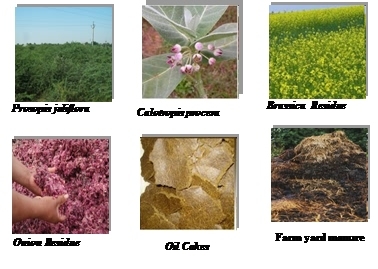 Biological control of soil borne disease:
Biological control of soil borne disease:
Biological control is the use of one or more beneficial insects/ microorganisms or their products for the management of plant pathogens. This management strategy has gain much attention in recent years because of occurrence of fungicide resistance in some pathogen, lack of reliable chemical control and lack of resistant cultivars. This technology has several benefits over the chemicals control of plant disease.
- This is ecofriendly and doesn’t have any negative impact on environment.
- This is target specific or pathogen specific hence it does not kill other beneficial micro-organisms.
- They do not have side effect on applicants unlike chemicals.
- They do not require repeated applications. Once applied into the soil, multiply itself and compete with the soil borne plant pathogen for food and space.
Some of the popular examples of bio-control agents for the management of soil borne plant pathogens in arid regions are given in the table. Fig: 5; Table-3
Table-3
|
S.No. |
Name of Bio-control |
Common name |
Applied against |
|
1 |
Trichoderma harzianum |
Marusena-1 |
Macrophomina phaseolina, Fusarium oxysporum, F. solani |
|
2 |
Aspergillus versicolor |
Marusena-2 |
M. phaseolina, F.o. fsp cumini |
|
3 |
Bacillus firmus |
Marusena-3 |
M. phaseolina |
|
4 |
T.harzianum + B. firmus |
Mishrit Marusena |
Macrophomina phaseolina, Fusarium oxysporum, F. solani |
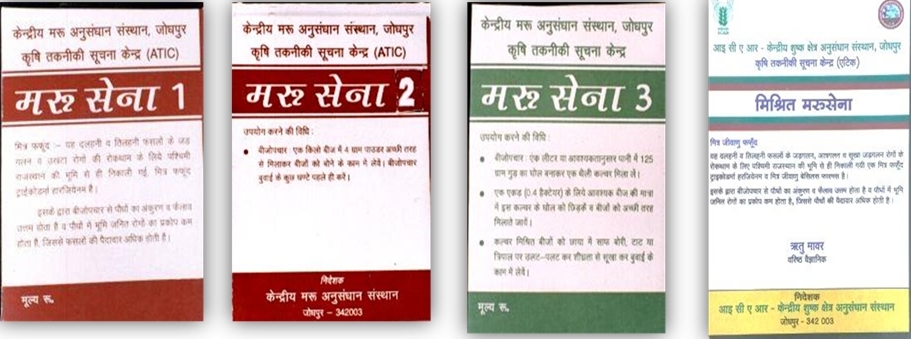
Conclusion:
These ecofriendly plant disease management methods can be used as an integrated disease management strategy to minimize the soil borne inoculum of plant diseases which ultimately enhance the farm productivity of Indian arid regions. These technologies give good results without any harm to the environment. They are cost effective and provide long term benefits for the sustainable development of arid land farming communities.
Authors
Ritu Mawar*, Ladhu Ram and Deepesh
ICAR-Central Arid Zone Research Institute, Jodhpur
Email:
